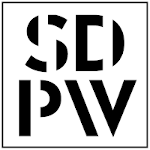Wykaz obszarów badawczych związanych z tagiem Czujniki:
| # | Obszar badawczy | Dziedzina naukowa |
|---|---|---|
| 1 |
Development of innovative, advanced sensing solutions, in particular for biosensing applications. The sensors benefit from unique properties of applied optical fibers and thin films. As a team, within recent years we have developed advanced technological and measurement capabilities, as well as gained world-wide recognized experience within thin film technology and optical fiber sensing techniques. We work on design (numerical analysis), fabrication (thin film technology, surface processing and functionalization), measurements (surface analysis; optical, electrochemical and biosensing measurements) and applications (collaboration with industrial and scientific partners, including mechanics, physicists, material scientists, chemists, biologist and medics). Additionally, we design and fabricate optoelectronic systems for analysis of response of developed sensors, as well as tune a wide gamut of thin film deposition techniques towards their custom applications.
|
|
| 2 |
|
|
| 3 |
włókna, materiały, światłowody, technologia światłowodowa, optyka stosowana, światłowody, inżynieria elektryczna i elektroniczna, materiały optyczne, polaryzacja, ciekłe kryształy, materiały optyczne i elektroniczne, fotoniczne włókna krystaliczne, fizyka ogólna, fizyka ogólna, fotoniczne włókna krystaliczne, fotoniczne ciekłe kryształy, dwójłomność, światłowody, czujniki, inżynieria biomedyczna, materiałoznawstwo
|
|
| 4 |
światłowód, włókna, materiały, materiały optyczne, polaryzacja, materiałoznawstwo, czujniki, czujniki optyczne, elektrotechnika i elektronika, materiały kompozytowe, optyka stosowana, fizyka stosowana, światłowód dwójłomny, materiały optyczne i elektroniczne, światłowód silnie dwójłomny, polaryzacja światłowodu, światłowód, ciekły kryształ, fizyka ogólna, światłowód fotoniczny
|
